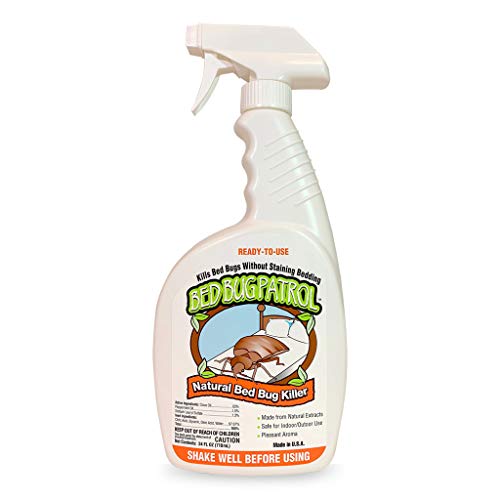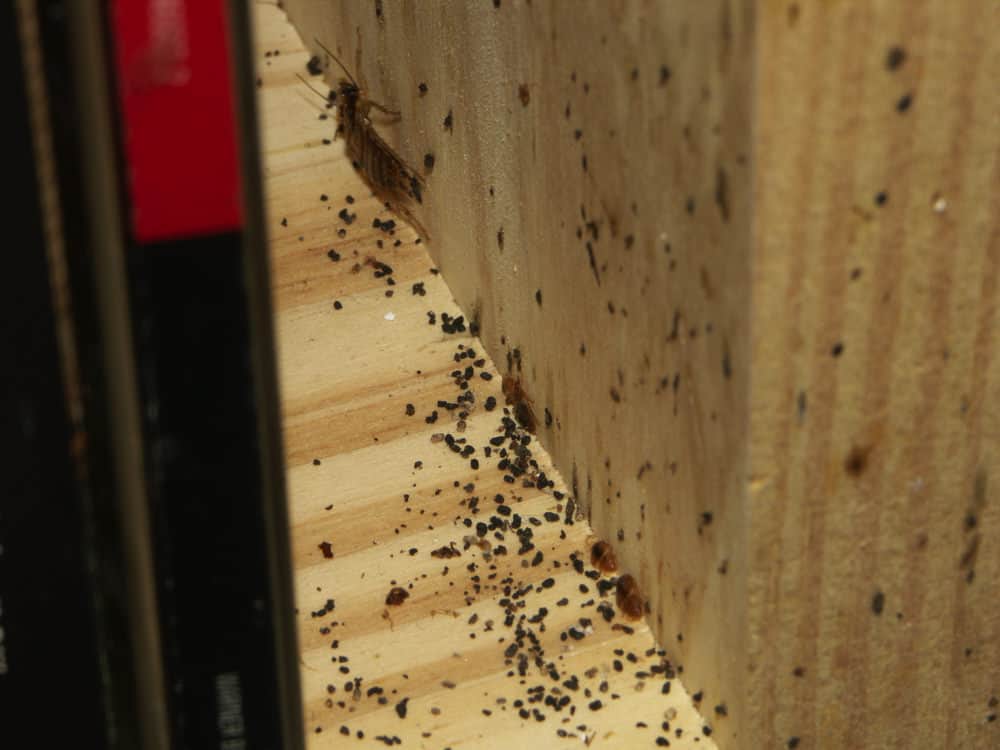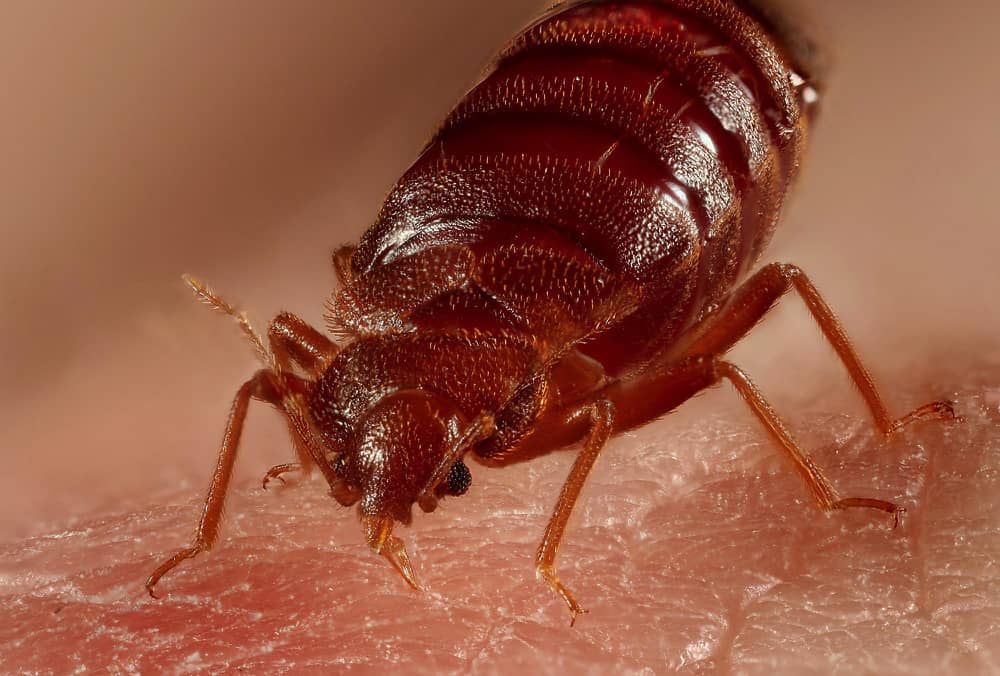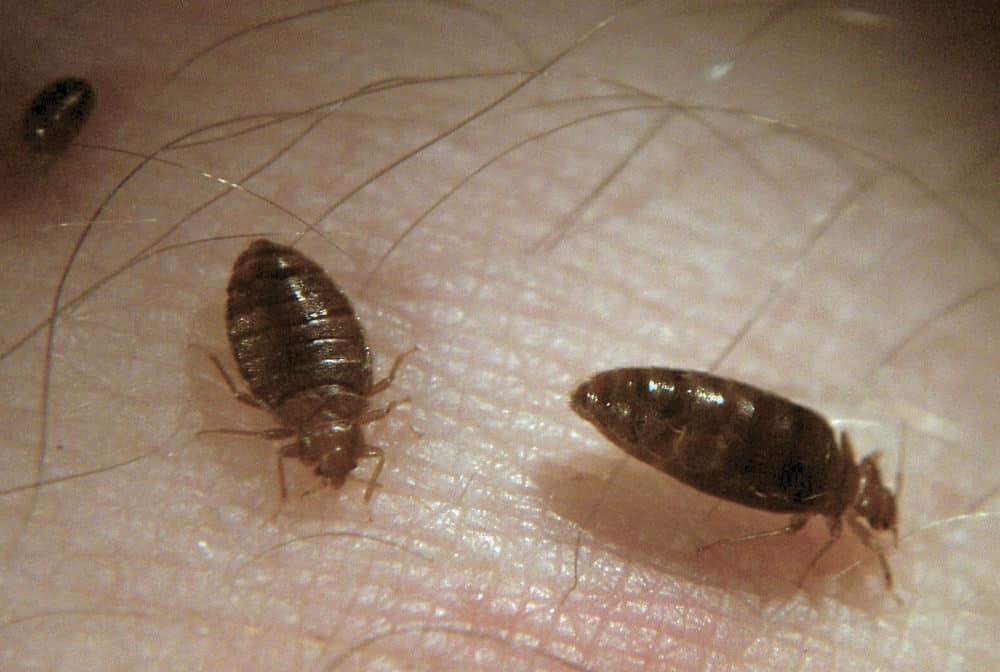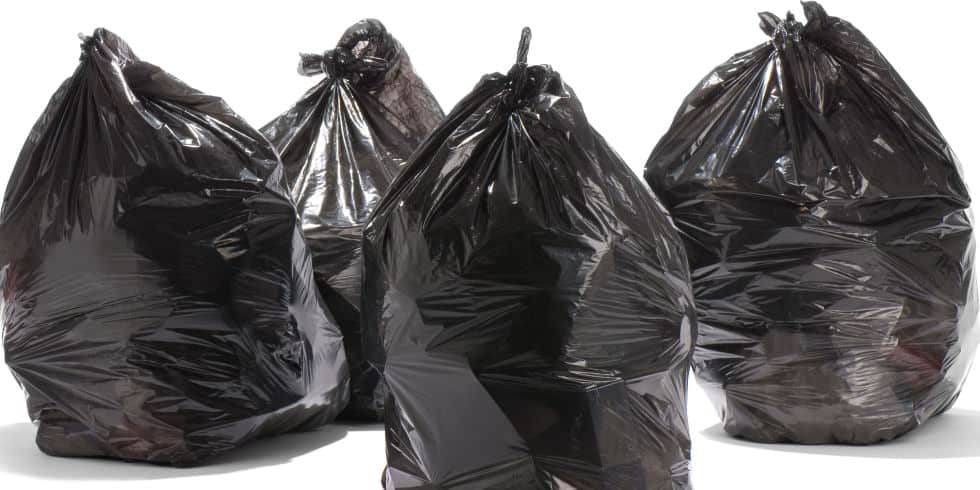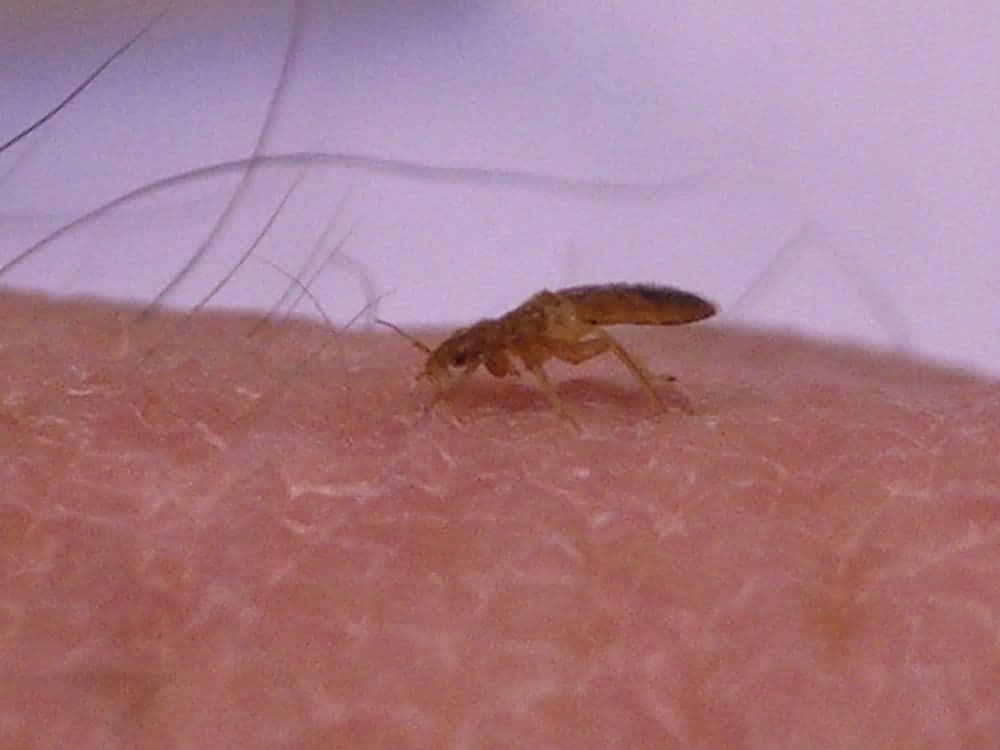What Chemicals Kill Bed Bugs?
In recent years, the United States has seen a stunning resurgence in cases of bed bug infestations popping up across the nation. Whether this is due to increased travel, climate changes, or simply public ignorance of the issue, bed bugs are becoming a problem that plagues people of all socioeconomic classes.
Chemicals that kill bed bugs can be used to halt or eradicate an infestation before it gets out of hand. According to the EPA, there are more than 300 registered pesticide products. To eliminate a bed bug infestation, homeowners often have to use a combination of chemicals to create a comprehensive treatment strategy. Several compounds have long been used to tackle bed bug infestations, from new nests to established populations.
Pyrethrins and Pyrethroids
Pyrethrins and pyrethroids are the chemicals most commonly used to treat bed bug infestations, along with other pest problems such as fleas or mites. They have gained popularity in recent years as a safer alternative to organophosphate pesticides, which are known to cause harm to local wildlife.
Pyrethrins are naturally derived from the chrysanthemum flower and kill bed bugs by causing paralysis and eventually death. Pyrethroids, on the other hand, are synthetic. They act similarly to pyrethrins, targeting the nervous system, but are more stable when exposed to sunlight.
Unfortunately, some insect strains have evolved resistance to pyrethrin and pyrethroid products. In this case, nests are not eradicated but just encouraged to relocate from their existing location, which can make treatment even more difficult. It can help to use a combination product that uses either multiple pyrethroid or pyrethrin active ingredients, or one that utilizes different chemicals to achieve a better result.
What Makes Pyrethrins and Pyrethroids Good Against Bed Bugs?
Both pyrethrins and pyrethroids are able to kill bed bugs quickly by attacking the nervous system and altering nerve function. They can also flush bed bugs out of their hiding spots, making it easier to kill colonies using additional eradication methods.
Examples of Pyrethrin and Pyrethroid Products
Deltamethrin, a pyrethroid product, is one of the most popular home pesticides available on the market. It uses odorless ingredients that won’t stain or leave any unsightly residue in their wake. Better yet, Deltamethrin is biodegradable and safe for most people and pets. It comes in multiple forms, including liquid, powder, and aerosolized canisters. Other popular pyrethroid compounds include Tetramethrin, Fenpropathrin, Cypermethrin, and more.
Desiccants
Most bugs are protected by a waxy layer coating their carapace which prevents excessive evaporation or dehydration. Without this protective layer, susceptible insects will dehydrate and die. Desiccant products take advantage of this by targeting and destroying this waxy coating to permanently kill off pest populations. While desiccants don’t kill bugs on contact, they can control insect populations in the long-term.
Homeowners can find different grades of desiccant products on the market, and not all are safe to use when dealing with bed bugs. It’s important to look for products registered by the EPA and labeled specifically for bed bug control. Other desiccants, such as those intended for agricultural use, may pose a health risk if inhaled.
Despite the fact that certain desiccants are safer for indoor use, they can still irritate the lungs when inhaled. It’s best to use desiccant around crevices and holes within the home to reduce the amount that gets into the air.
What Makes Desiccants Good Against Bed Bugs?
Unlike other chemical pesticides, desiccants work through a physical mode of action. This means that bed bug populations aren’t able to evolve resistance over the generations, and desiccant products will continue to work time and time again. They also offer long-lasting effects that prevent secondary infestations from popping up after the initial problem has been eradicated.
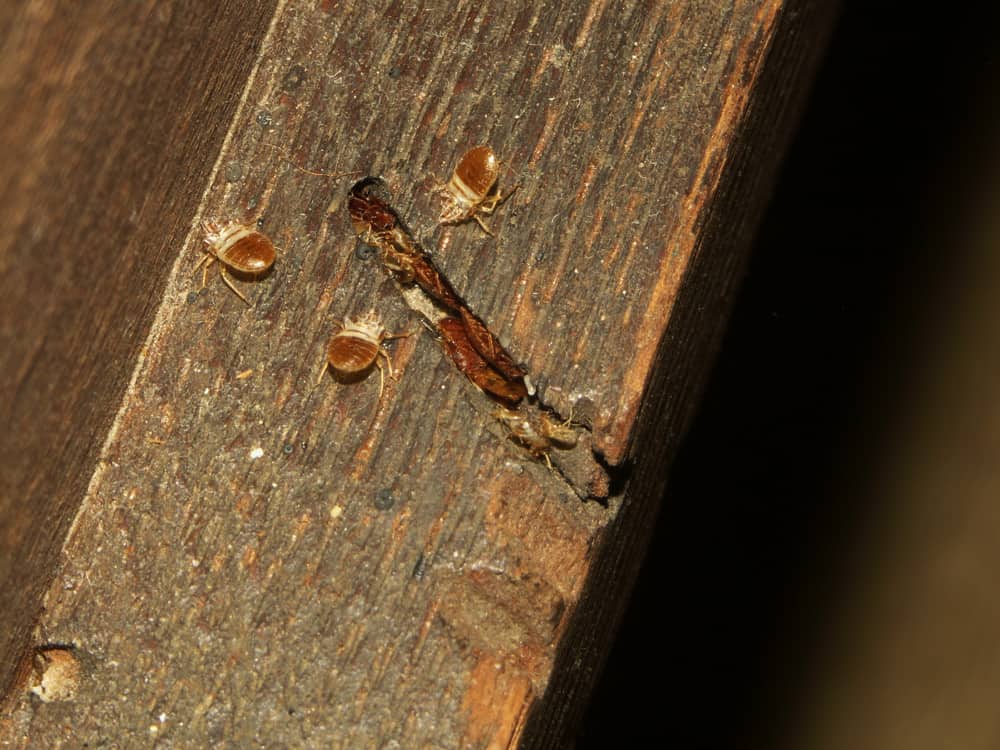
Examples of Desiccant Products
Diatomaceous earth is a desiccant made of living algae that kills insects such as bed bugs without being harmful to children or pets. Diatomaceous earth usually comes in powder or dust form.
Boric acid is another popular and cost-effective desiccant, as is silica gel. These products pose a greater risk to cats, dogs, and younger family members. It’s vital that homeowners always read the label to ensure that they are using a product safely.
Biochemicals
Biochemical pesticides are becoming increasingly popular as more and more households switch to greener technologies in an effort to lower their carbon footprint. Biochemicals are naturally derived from plants, fungi, and other sources. They control pests using a non-toxic mechanism that’s safe for people and pets, even in areas such as the kitchen.
What Makes Biochemicals Good Against Bed Bugs?
Biochemical products are safe for humans, but trials have shown time and time again that they are lethal for pests. Biochemical pesticides control all stages of an infestation, including adults, nymphs, and eggs.
Examples of Biochemical Products
Currently, there aren’t many biochemical pesticides available on the market that are recognized by the EPA. Cold pressed neem oil is the only biochemical product registered for use against bed bug infestations. The oil is derived from seeds of the Neem tree, an evergreen found in Southeast Asia and parts of Africa. Not only does neem oil have insecticidal properties, but it is also thought to help deter bed bugs from biting.
Pyrroles
Pyrrole pesticides take advantage of the natural biological activity found in pests to create cellular disruptions severe enough to lead to death. Pyrroles only work upon being ingested. Metabolic processes activate the pyrrole chemical, forming a new compound that disrupts critical internal functions and leads to a relatively quick death. Pyrroles do not affect eggs, and so are often used in conjunction with other pesticides.
What Makes Pyrroles Good Against Bed Bugs?
Pyrroles are able to efficiently kill bed bugs by using their own metabolic processes against them. Products can kill both mature adults and nymph bed bugs without causing significant damage to other local insect populations.
Examples of Pyrrole Products
Currently, Chlorfenapyr is the only pyrrole pesticide registered for use against bed bugs. It works by disrupting ATP, a molecule that is the main energy source for muscles. Without ATP, cells begin to die, which disrupts organ systems and eventually leads to the death of the insect.
Neonicotinoids
Neonicotinoids are a synthetically created molecule that mimics naturally occurring nicotine. These pesticides act on nicotinic receptors found in bugs and cause the nervous system to fire repeatedly. This leads to nerve damage, and eventually, death. Neonicotinoids are able to effectively combat live insects during a heavy infestation.
What Makes Neonicotinoids Good Against Bed Bugs?
Neonicotinoids have a unique mode of action that takes advantage of physical processes instead of genetic or metabolic. This means that, like with desiccants, bed bugs can’t build up resistance to neonicotinoids. These compounds can be used to combat bed bug populations that have developed resistance to other chemical pesticides.
Examples of Neonicotinoid Products
Pesticides usually combine neonicotinoids with other chemicals to produce the most successful results when tackling an infestation. There are several products registered with the EPA that contain neonicotinoids in addition to other compounds such as pyrethroids. Pesticides with neonicotinoid properties include Derby, Dry Pyrocide Insecticide, Speer Neoperm Insect Killers, and more.
Insect Growth Regulators
Insect growth regulators (IGRs) mimic growth hormones in certain insects, forcing them to either develop too quickly or halt development before entering into sexual maturity. Some IGRs work by either messing up chitin production, preventing the development of a protective carapace, while others simply affect an insect’s natural growth cycle.
What Makes Insect Growth Regulators Good Against Bed Bugs?
Instead of killing adult bed bugs, IGRs inhibit their life cycle to prevent them from maturing. Not only does this keep the overall bug population at a minimum, but it also ensures that mature insects are unable to reproduce and lay eggs. IGRs effectively tackle every life stage of bed bugs in just one step.
Examples of Insect Growth Regulators Products
Hydroprene is a common IGR used to destroy bed bug nests, even at late stages in an infestation. It prevents adult insects from reproducing and has a long-lasting effect. The product comes in liquid, solid, or aerosolized forms and is generally safe for people and pets.

Risks Of Using Chemicals In The Home
Exposure to chemicals of any sort can lead to health problems that range in severity. Dusts and powders that come into contact with skin may lead to rashes and irritation in sensitive individuals, or cause pulmonary issues if inhaled. Aerosolized pesticides, like common bed bug sprays, can also get into the lungs and lead to irritation and discomfort. Eyes and mucous membranes are susceptible to corrosive chemicals, as they absorb compounds quickly.
It’s important for homeowners to make sure that they were protective gear when using pesticides and other chemical products. Goggles, face masks, gloves, and long sleeves can all help to prevent unwanted contact.
There is a wide variety of chemicals that kill bed bugs, each of which uses a different mechanism of action to work. Many homeowners choose to combine chemicals in order to eradicate a persistent infestation successfully. When using chemicals, it’s essential that homeowners keep safety at the forefront of their minds to keep their family and their home safe from harm.
My Favorite Bed Bug Treatment Products
While getting rid of bed bugs without buying any additional products can be done with very small infestations, I believe that by purchasing just a few additional products, you’ll be so much better equipped, and will be able to stamp out an infestation before it gets worse. Below is my list of essential products.
Bed Bug Patrol Bed Bug Killer – One of the best bed bug sprays that I’ve yet to personally use. Not only does it have a reported 100% kill rate against live bed bugs in controlled tests, but it’s also child and pet friendly. This product can be used against both light and heavy infestations, and most importantly, it’s laboratory tested and completely chemical-free.
Studies conducted using the treatment showed an impressive kill rate of 83% within just 30 minutes after application, and 98% within the first four hours, leading on to an eventual mortality rate of 100% over time.
SureGuard Mattress Encasement – It’s thick, durable, and is certain to help stop bed bugs of all sizes from getting to, or from, your mattress.
The protector prevents bed bug transportation by using SureSeal technology, and by using an extremely fine zipper that not even bed bug nymphs can impregnate.
In my experience, the best and most effective bed bug traps are usually the ones that are designed to work in the simplest of ways. I’ve used the Bed Bug Blocker Interceptor Traps extensively and I find they do the job better than any other trap I’ve tried. You also get a very generous 8 interceptors per pack.
Simply place them directly underneath the bed/table/chair legs you’re trying to protect, and watch the bed bugs fall into the traps time and time again with no chance of escape.
ZapBugg Bed Bug Heater – Specially designed to kill all stages in the bed bug life cycle, including eggs, without the need to purchase expensive pest control heat treatment solutions.
Simply place infested items into the ZappBug heater and it will automatically reach the all-important bed bug killing temperature, so you can be sure the items will come out free from all life stages of bed bug once the process is complete.
Large and small versions are also available.

